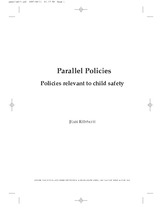| dc.description.abstract | The Centre for Justice and Crime Prevention’s 2005 National Youth Victimisation Study indicated the need to explore existing policy impacting on children from a social crime prevention perspective within a rights-based framework. This policy analysis was commissioned to undertake that analysis. A social crime prevention perspective is one which views crime as a social problem, stemming from the socio-economic environment and facilitated by through the situation in which crime occurs. The risk factors associated with both victimisation and offending of children are such that policy in the poverty alleviation, health, education and criminal justice sectors are relevant to social
crime prevention.
Poverty is widespread among children. The current social grants framework does not appear equal to the realities of poverty in South Africa. Problems include the exclusion of children over 14 from child support, the overburdening of the foster system as a result of pressure driven by HIV/Aids, and limitations on the availability of the care dependency grant. The overall health of children is poor and appears to be deteriorating. While free primary health care is available, access in terms of transport, medicines and availability of medical staff is problematical. Preventative care may have been neglected in the drive to provide free primary care. There is a lack of recognition
that health is influenced by such factors as housing, access to water and sanitation.
There is also no single overarching child health policy. Education funding policy may be having the unintended consequences of
exclusions, school drop-outs, and trapping poor children in the weakest, poorest schools. Criminal justice and child protection policy have been hampered by a swing to a ‘tough on crime’ approach, which may be exacerbating the social conditions that lead to crime. Children as victims are not yet adequately protected in the system and they are being imprisoned for longer periods, despite imprisonment being ‘a
measure of last resort’.
Given the matrix of social risk factors South Africa’s children are exposed to – poverty, disrupted families, poor health conditions, inadequate schooling – it is no surprise that children are at risk from both victimisation and offending perspectives. The current policy framework falls short of meeting the challenges posed by these risk factors. There is much to be done from a social crime prevention perspective. | en_US |

